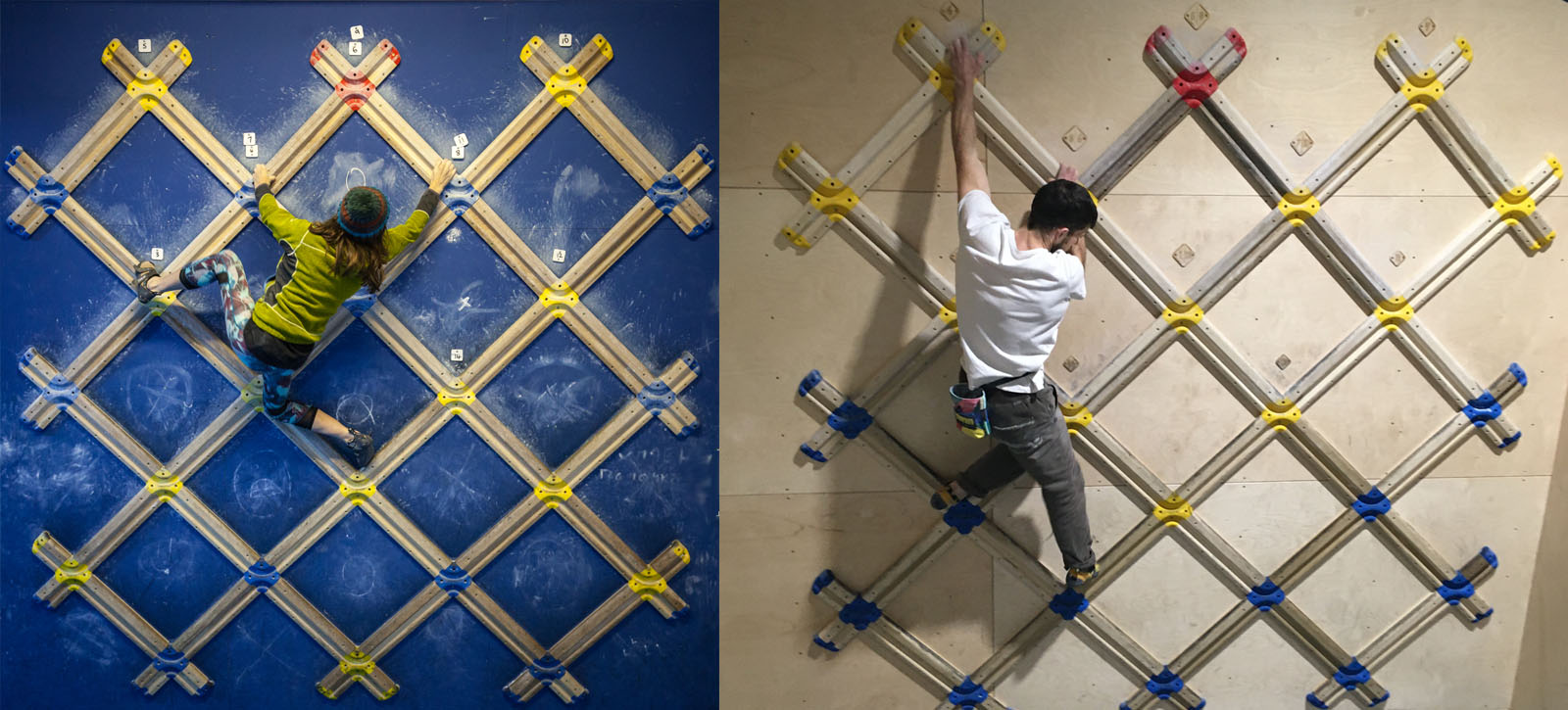16.12.19
Lattice Board
You might have seen a Lattice Board in our centres and wondered what on earth it was all about. TCA Director Alan Cassidy tells us a little more about the board and most importantly how you can improve your climbing through a Lattice Assessment.
UPDATE Lattice Assessments are no longer available in TCA, but you can contact our coaches for bespoke training. If you want to get some inspiration for training as well as exercises designed specifically for the Lattice Board, download the excellent free app Crimpd.
Let’s start with a bit of
climbing history…
Once upon a time in a galaxy (not that) far, far away; climbing walls were not what they have become. Back then, (the early 2000s) the GB senior lead climbing team was going through a bad patch – British comp climbing had such a big talent deficit that people like me and Rob Sutton (TCA Director) were good enough to make the team!
The team was coached by English sports scientist Dave Binney and Tom Randall, who at the time was not even a “Wide Boy” yet. Dave had developed a test in his basement to investigate endurance capacity in rock climbers forearms. As a test subject, I was taken into Dave’s Sheffield basement and forced to hang on to a single rung, foot on campus board with one, alternating hand, for a very long time. The test was informative but lacked some specificity. In that basement, Tom clearly saw some potential – although sadly it wasn’t for me to stand on a World Cup podium.
proven results
Using Lattice data
The Lattice Board is the evolution of that basement testing tool. It was originally developed by Tom Randall and further advanced by his company Lattice Training. He and his business partner Ollie Tor have quickly become some of the most respected names in the climbing training space and a lot of it has to do with their approach. Lattice has been collecting data on climbers and what physical parameters affect their performance for a number of years now. The richness of their data set, and the simplicity of the methodology means that the Lattice Assessment is unrivaled when it comes to bang for the buck if you want to know where you are as a climber.
Whether you specialise in route climbing or bouldering, the test results are a mine of information. They will help pinpoint any weak areas of performance, and highlight the type of training you need to focus on to become a better-rounded athlete.

Who would benefit from a Lattice Assessment?
Whilst a Lattice assessment is not for absolute beginners – who would be better advised to seek out a Movement and Technique* course – it does not require top-level performance. It is accessible to almost anyone operating above French 6b+ in sport climbing. This roughly equates to those who would feel comfortable going round most of the problems in the bottom 2 or 3 coloured circuits at TCA. If that is you and you want to know how your strengths and weaknesses stack up, a Lattice Assessment is for you!
Before you begin, you have to complete a short questionnaire which will inform the test. The session itself typically lasts about 2 hours (although if you have a lot of endurance you might find yourself hanging on a bit longer!). At the end of the session your results are compared with the Lattice data set. They are then compiled into a report that clearly breaks down the varying elements that affect climbing performance and where you stand relative to others who operate at the same level. It then suggests what areas you should focus on to become a better climber. This could include: finger strength, power endurance, footwork etc.
If only we had had this sort of thing back in my day, I might have been standing on the top of the Olympic Podium in Tokyo 2020.
*Find out more about Movement and Technique courses at The Mothership (Bristol) and The Newsroom (Glasgow).



